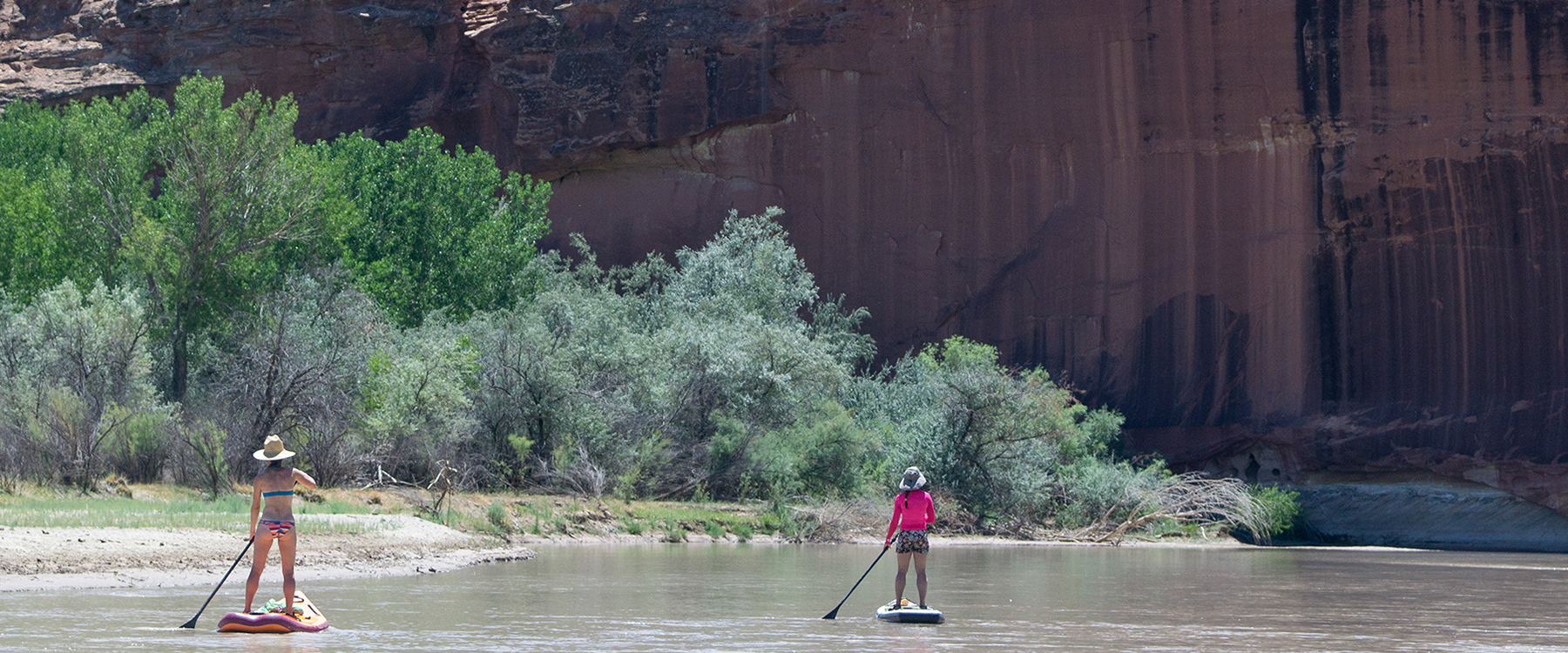For paddling enthusiasts, getting out on the water is synonymous with relaxation, adventure, and fun. But to keep it that way, practicing good safety measures is a must-do. And a big part of making sure you stay safe is ensuring you and your boat are properly equipped with the right gear, from a dependable helmet right down to a trusty tow line.
Here are nine essential pieces of paddling gear you should invest in to keep you safe on the water for all kinds of adventures, from a leisurely SUP trip to a hardcore whitewater run.
1. PFD
A personal flotation device or PFD—oftentimes incorrectly referred to as a life jacket—is perhaps the most essential acronym in paddling and a must-have any time you go out on the water. Whether you’re headed on a leisurely kayaking excursion with the kids or rip-roaring whitewater adventure, you should be wearing one.
Make sure to choose a PFD that is designed specifically for kayaking, canoeing, or SUP, with larger armholes that make paddling easier and more comfortable. You can also opt for an inflatable PFD, which have a much lower profile than traditional life jackets but still offer good buoyancy.
2. Helmet
If whitewater is your thing, don’t even think about setting foot in a boat without strapping on a helmet. This essential piece of safety gear will protect your noggin should you be thrown from your boat in rocky stretches or shallow water. A good helmet should be sturdy, of course, but comfortable and easy to fasten under your chin.
3. First Aid Kit
A well-stocked but compact first aid kit is essential for any outdoor adventure, paddling including. Keep your kit dry and accessible by storing it in a clearly designated dry bag that’s easily reachable—in an emergency medical situation that requires immediate attention, the last thing you want to do is be digging through your gear for your first aid essentials.

4. Spray Skirts and Cockpit Covers
Spray skirts are waterproof barriers that cover the area between your waist and the kayak's cockpit rim (also called coaming). Spray skirts are crucial in keeping water—whether it’s in the form of waves, rain, or spray—out of your boat, and, as a result, keeping you drier and warmer. And not only is water in your kayak a nuisance it can also make your boat unstable.
Cockpit covers, meanwhile, serve a similar function, but they’re designed to fit over the front part of a kayak cockpit or canoe. Like spray skirts, they should be used in all but the calmest, warmest conditions.
5. Whistle
A whistle is compact and unobtrusive, it weighs almost nothing, and it can mean the difference between being heard and, well, not being heard in a rescue situation. Whistles are the cheapest piece of safety gear you’ll buy as a paddler, and there’s no excuse for not having one on you (most come with a ring to attach to your PFD), making it easily accessible.
6. Throw Bag
The name of these handy devices says it all: They’re bags that are literally thrown to another person in the water after their boat capsizes. The swimmer catches the bag and is pulled to safety. Most helpful in moving water, throw bags can be used by people on the shore or in other nearby boats. Bottom line: If you’re a whitewater junkie, you should definitely have a throw bag in your boat.

7. Tow Line
When a paddler is tired or injured, a simple tow line can save the day. One end of the tow line is attached to the rim (coaming) of the kayak or canoe (or the waist of the tower), while the other is clipped to the boat being towed. In addition, you can opt for a tow line that also has a bag attached, which can be thrown to a capsized paddler.
8. Bilge Pump or Bailer
In the event that you do capsize, you’re going to need a way to get the water out of your boat once you get back in. In a canoe, that can be a simple bailer—something as makeshift as a small bucket or plastic container. But in the more closed quarters of a kayak, you’ll most likely need a bilge pump, which makes quick work of getting excess water out of your boat.
9. Secure Transport System
You won’t remember that epic day on the water for the right reasons if your boat comes crashing off your vehicle onto the highway on your way home. A solid, secure transport system for your kayak or SUP is an essential part of your gear setup. A quality roof rack is especially important if you’re doing any driving, complete with reliable cam straps.


Comments